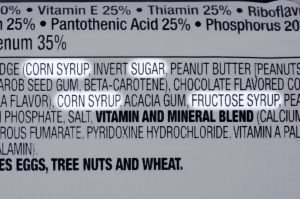The topic of processed foods is somewhat convoluted as there are multiple definitions of what constitutes a processed food item. The majority of foods experience some level of “processing”, however it’s the degree to which a food is altered from its natural, whole form that we should question and, ultimately, teach our clients to limit.

Process vs. Processed Foods
Every item in your local grocery store has experienced a process that involves getting from its point of origin to the supermarket. For example, milk goes from the cow to the plant to be pasteurized and deemed safe for consumption. It’s then bottled, stored, and shipped. That’s a process.
The same is true for fresh produce. Some of those items may simply be cleaned, cut, and bagged. That’s still a process, but they are not considered processed foods.
Processed, in contrast, refers to a food item that has undergone chemical and/or mechanical operations in an order to alter or preserve that item. For example, cheddar-flavored crackers are a common packaged food. The base of the cracker was taken from a whole grain/wheat source, refined (mechanically and chemically) to enriched bleached flour, other preservatives and artificial flavors and colors are blended with the base ingredients, baked, and bagged. This item is altered from its original state. In other words, it is heavily processed.
The Ingredients Are Key
Certainly, not all packaged food items should be considered unhealthy. It would be short-sighted to categorize foods as simply “good” or “bad”, “healthy or “unhealthy”. Rather, there are plenty of packaged food options that offer quality, nutrient-dense fuel, and there are others that don’t have as much value to offer.
When it comes to evaluating packaged foods, teaching clients to scrutinize the ingredient list is an effective way to help them determine quality food sources.
Consider this: A package of roasted peanuts includes simple and recognizable ingredients such as roasted peanuts and salt (and, sometimes a type of oil). This item offers a source of protein and healthy fat (much like natural peanut butter). Compare that to a box of extreme cheddar crackers and the ingredient list differs considerably as does the quality of nutrients available.
Watch For Misleading Marketing Messages
While the ingredient list provides a clear picture of a food’s processing journey, it isn’t always the natural “go-to” place for information. Teaching clients about misleading marketing messages is equally as important. Clever marketing efforts place a health halo around packaged foods that can influence the consumer by making it appear as if that food is a healthy option based on buzz phrases.
Phrases to watch for include “gluten-free”, “fat-free”, “reduced calorie”, “no added corn syrup”, “high protein” or even “all natural”. While all those messages might be accurate, they should not be confused with “healthy”.
Some clients may have a legitimate gluten allergy in which case they will need to seek out gluten-free foods. Just because the package says “gluten-free” does not mean it’s the best option to select for consumption, even for celiac sufferers. The same can be said for foods that claim to be “corn syrup-free”. Those items may indeed omit corn syrup, but is there another type of sugar included such as malt syrup, brown rice syrup, etc., or other added sweetener? Again, the absence of corn syrup doesn’t automatically mean the food isn’t processed or that it is the best choice.
Here’s where you can reinforce the “evaluate the ingredients” message. While these items can claim a gold star in the gluten or corn-syrup-free categories, they are also likely full of other hidden ingredients such as oils, salts, different forms of sugar, dyes, and preservatives which ultimately lower the quality of the food. Instead, help clients find alternatives that are closest to the natural form of the food.
What Personal Trainers Can Do
Incorporate small teaching lessons in the first 10 minutes or the last 10 minutes of each session in which you focus on helping clients understand how to differentiate a quality food from one that’s been heavily processed based on its ingredient list and marketing messages.
Have clients bring in different items or even take a photo of the packaging when they are unsure of how to evaluate the food. Work through it with them. Eventually, they will be able to spot sneaky ingredients on their own and recognize when a food is simply edible versus a high-quality fuel source.
How do you work with clients to help them understand the various aspects of healthy eating?
Dr. Erin Nitschke, NFPT-CPT, NSCA-CPT, ACE Health Coach, Fitness Nutrition Specialist, Therapeutic Exercise Specialist, and Pn1 is a health and human performance college professor, fitness blogger, mother, and passionate fitness professional. She has over 15 years of experience in the fitness industry and college instruction. Erin believes in the power of a holistic approach to healthy living. She loves encouraging her clients and students to develop body harmony by teaching focused skill development and lifestyle balance. Erin is also the Director of Educational Partnerships & Programs for the NFPT. Erin is an editorial author for ACE, IDEA, The Sheridan Press, and the Casper Star Tribune. Visit her personal blog at belivestaywell.com


